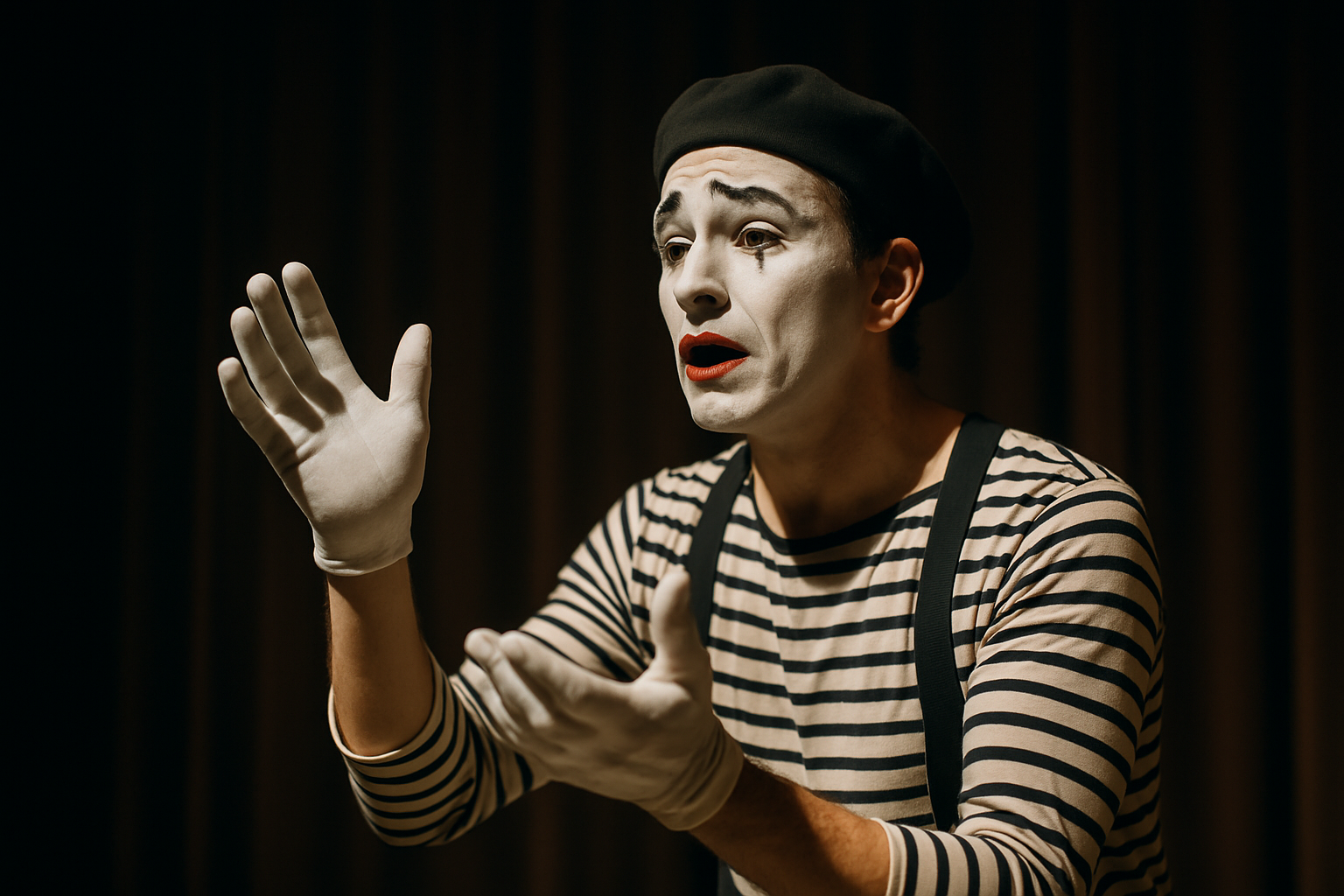The Silent Revolution: Mime's Modern Resurgence
In an era dominated by digital noise, a centuries-old art form is making a surprising comeback. Mime, long relegated to street corners and children's parties, is experiencing a renaissance in theaters, on social media, and even in corporate training programs. This resurgence of silent storytelling is challenging our notions of communication and proving that in a world of constant chatter, sometimes the most powerful messages are conveyed without words.

Marcel Marceau and the Golden Age
The name Marcel Marceau is synonymous with modern mime. His character Bip, a white-faced clown in a striped pullover and battered hat, became an icon of the art form. Marceau’s performances brought mime to international acclaim in the mid-20th century, inspiring a generation of performers and elevating the craft to high art status.
The Decline and Stereotypes
As the 20th century progressed, mime began to lose its luster. Street performers mimicking Marceau’s style became ubiquitous in tourist areas, often to the annoyance of passersby. The art form became associated with clichés and stereotypes, relegated to the realm of novelty acts rather than serious artistic expression.
Digital Age Revival
Surprisingly, it’s the digital age that has breathed new life into mime. Social media platforms, particularly TikTok and Instagram, have become unexpected venues for mime performances. Short-form video content has created a perfect stage for visual storytelling, allowing mime artists to reach millions with their wordless narratives.
Beyond Entertainment: Mime in Education and Business
Mime is finding applications far beyond entertainment. Educational institutions are incorporating mime techniques into their curricula to enhance students’ non-verbal communication skills. In the corporate world, mime workshops are being used to improve team dynamics and leadership abilities, focusing on body language and silent communication.
The New Face of Mime
Today’s mime artists are breaking traditional molds. They’re incorporating elements of contemporary dance, circus arts, and even technology into their performances. Some use projection mapping to create interactive environments, while others combine mime with spoken word for a hybrid form of expression.
Mime Festivals and Global Recognition
International mime festivals are gaining popularity, attracting performers and audiences from around the world. Events like the London International Mime Festival and the Toronto International Mime Festival showcase the diversity and innovation in contemporary mime, challenging preconceptions about the art form.
Challenges and Controversies
As mime reenters the mainstream, it faces new challenges. Cultural appropriation concerns have arisen, particularly regarding the use of whiteface makeup. Some artists are choosing to perform without it, focusing instead on the purity of movement and expression.
The Future of Silent Storytelling
As our world becomes increasingly saturated with digital noise, the appeal of mime’s silent storytelling is likely to grow. Its ability to transcend language barriers makes it uniquely suited for our globalized society. The art form’s adaptability suggests that mime will continue to evolve, finding new ways to captivate audiences in the 21st century and beyond.
In conclusion, mime’s resurgence is a testament to the enduring power of non-verbal communication. As this ancient art form adapts to modern contexts, it reminds us that sometimes, in silence, we find our most eloquent voices. The mime artists of today are not merely revivers of a lost art; they are innovators, pushing the boundaries of expression and challenging us to see the world through new, wordless perspectives.





